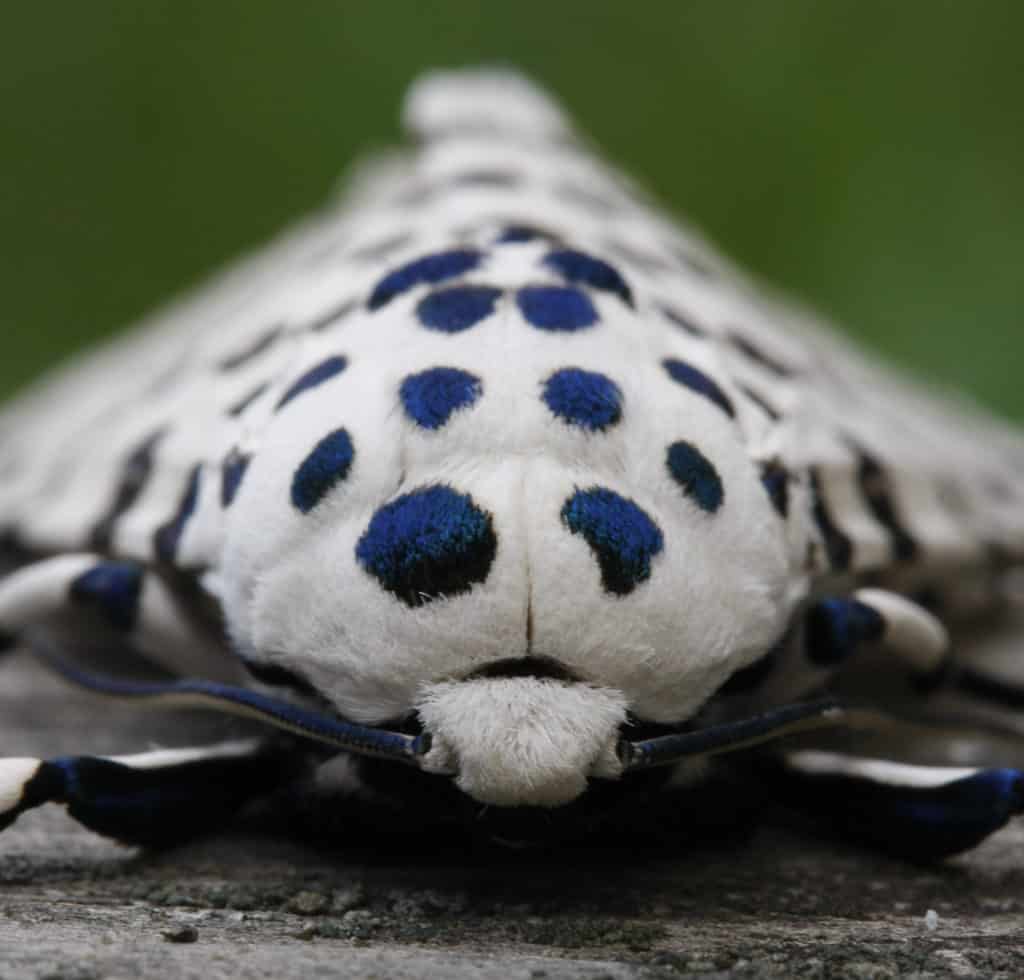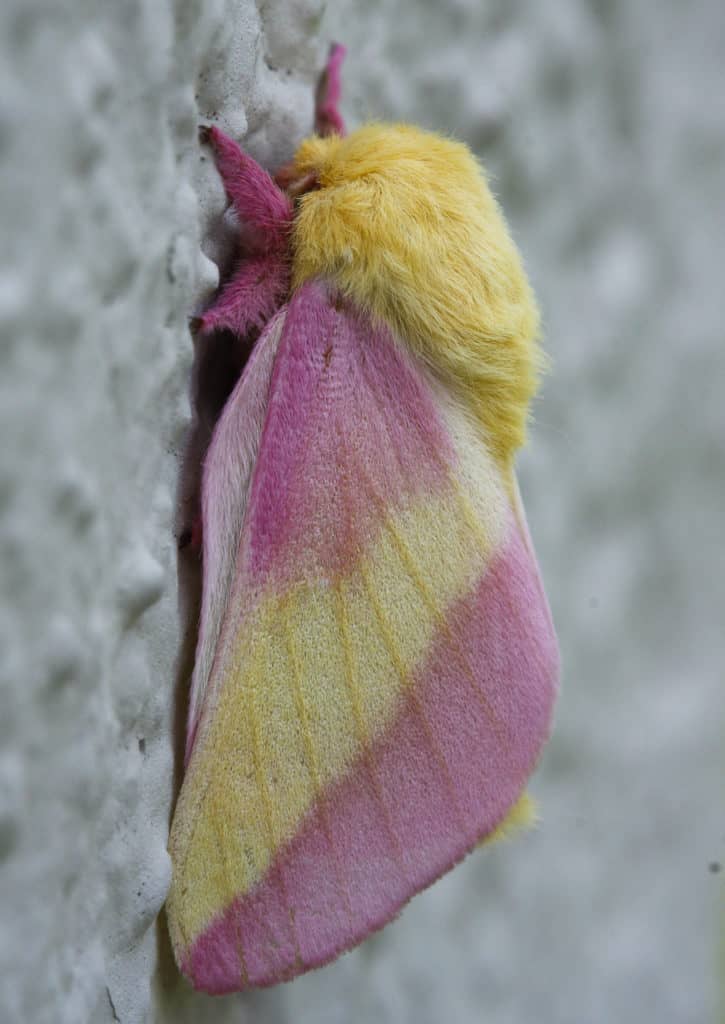Creature Feature

The giant leopard moth 
The rosy maple moth
On the Hunt for the Giant Leopard Moth
By Wayne Bierbaum
In the summer, streetlights and outdoor house lights attract moths. They fly toward the source of light as they normally would fly toward the moon in order to find the opposite sex or just to travel. In the morning, tired or newly emerged moths can be found near the light. Birds, frogs, toads, lizards, raccoons, opossums and other moth eaters know of this phenomenon and sometimes all that is left in the morning are wings.
I take a few moments each summer’s day to check around the lights at home and at work. I have found some very interesting critters that way. One of the prettiest is the rosy maple moth, which looks like an old flamboyant Elvis Presley.
The most dramatic is the giant leopard moth. They should be called a snowy leopard moth as their coloration is black circles or dots on a white background. They have thick turquoise alternating with orange bars on their abdomen but those colors are usually hidden under their wings.
The leopard moth is the end result of a woolly bear caterpillar. It seems in the fall that these caterpillars are everywhere as they look for a place to spend the winter. In the far north, they have only one brood, in our area, there is frequently two with the second overwintering in a cocoon.
The caterpillars feed on many species of plants and seem to have a preference for plants that are toxic or noxious to other animals. This gives them some defense but is does not work against parasitic wasps which are their major predator. The wasp lays eggs on the caterpillar and the developing larva consumes the host.
Only the males seem attracted to artificial light so to find a mate the males follow the female’s scent, pheromones. The females are just too smart to fall for that artificial stuff. I like to see what the lights attract each night but I also worry that the lights are causing harm to the animals as they do get injured running into the light and the wall. If you share my concern, consider putting up lights that do not attract moths, or simply turn them off at night.
